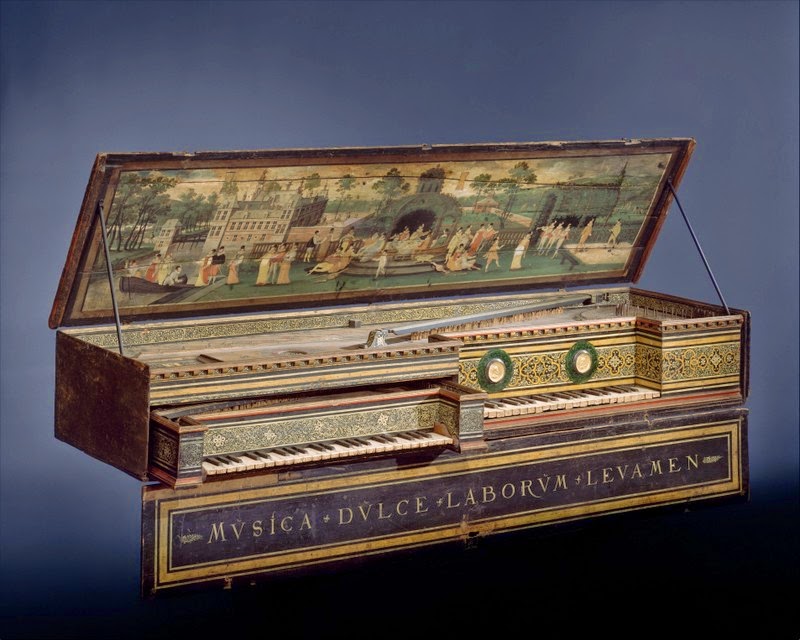Speaking of visuals (see previous blogpost) . . .
Most every scholar who has ever published material with illustrations can regale you with sagas of work held up for months or years—to say nothing of delayed advancements—waiting for the necessary permissions and clearances to arrive. No one wants to be overtly illegal, but we do need to get on with the tasks at hand. Of late, notions of fair use for scholarly product appear to be becoming more liberal, and at least some rights-holders have simplified their processes and structures.
Last week's announcement by the Metropolitan Museum of Art of Open Access for Scholarly Content (OASC) of some 400,000 images is welcome news indeed. Through OASC, artworks in the Collection section of the website which the Museum believes to be in the public domain and free of other known restrictions have been identified by an icon,
Image may be NSFW.
Clik here to view.
and images associated with these artworks can be downloaded for license- and cost-free scholarly and academic publication, according to the Terms and Conditions. To learn more about how to identify, access, and use OASC, see Frequently Asked Questions: Open Access for Scholarly Content (OASC). Here you will find admirably lucid explanation and sensible definitions. Hooray.
In fact the Internet may be doing for visuals roughly what bathtub gin did for Prohibition and the office Xerox machine did for the periodical literature. In early March 2014, for instance, Getty Images, proprietor of such major historical collections as the Hulton Archive (and not widely reputed for easing scholarly paths), introduced its embedding feature, which allows users to post material from their collection—said to number 35 million images newly available—anywhere HTML is supported.
To embed, visit www.gettyimages.com, hover over an image in the search results or on the image detail page, and click the embed icon (</>).The embedded images will be hosted on the gettyimages.com site, but they will appear in the context of the viewer on the site where they are embedded. The viewer includes the name of the photographer and image collection, and a link back to the image page on www.gettyimages.com where people can license it for commercial use.
“You have to adapt to survive,” said a Getty spokesman (at last).
| Image may be NSFW. Clik here to view.  |
| Hans Ruckers the Elder Double Virginal, 1581 Metropolitan Museum of Art, New York www.metmuseum.org |
Permalink HERE
Most every scholar who has ever published material with illustrations can regale you with sagas of work held up for months or years—to say nothing of delayed advancements—waiting for the necessary permissions and clearances to arrive. No one wants to be overtly illegal, but we do need to get on with the tasks at hand. Of late, notions of fair use for scholarly product appear to be becoming more liberal, and at least some rights-holders have simplified their processes and structures.
| Image may be NSFW. Clik here to view.  | |
| Orpheus among the Thracians Terra-cotta crater, c. 440 BC www.metmuseum.org |
Image may be NSFW.
Clik here to view.
and images associated with these artworks can be downloaded for license- and cost-free scholarly and academic publication, according to the Terms and Conditions. To learn more about how to identify, access, and use OASC, see Frequently Asked Questions: Open Access for Scholarly Content (OASC). Here you will find admirably lucid explanation and sensible definitions. Hooray.
| Image may be NSFW. Clik here to view.  | |
| Édouard Manet: the great baritone Jean-Baptiste Faure (1830–1914), c. 1882–83—among Manet's last works www.metmuseum.org |
Permalink HERE
In fact the Internet may be doing for visuals roughly what bathtub gin did for Prohibition and the office Xerox machine did for the periodical literature. In early March 2014, for instance, Getty Images, proprietor of such major historical collections as the Hulton Archive (and not widely reputed for easing scholarly paths), introduced its embedding feature, which allows users to post material from their collection—said to number 35 million images newly available—anywhere HTML is supported.
To embed, visit www.gettyimages.com, hover over an image in the search results or on the image detail page, and click the embed icon (</>).The embedded images will be hosted on the gettyimages.com site, but they will appear in the context of the viewer on the site where they are embedded. The viewer includes the name of the photographer and image collection, and a link back to the image page on www.gettyimages.com where people can license it for commercial use.
“You have to adapt to survive,” said a Getty spokesman (at last).
- Getty Images press release, early March 2014.
Leopold Mozart (1719–87)
Etching by Jacob Andreas Fridrich after a painting by G. Eichler, 1756.
Photo by Imagno/Getty Images.